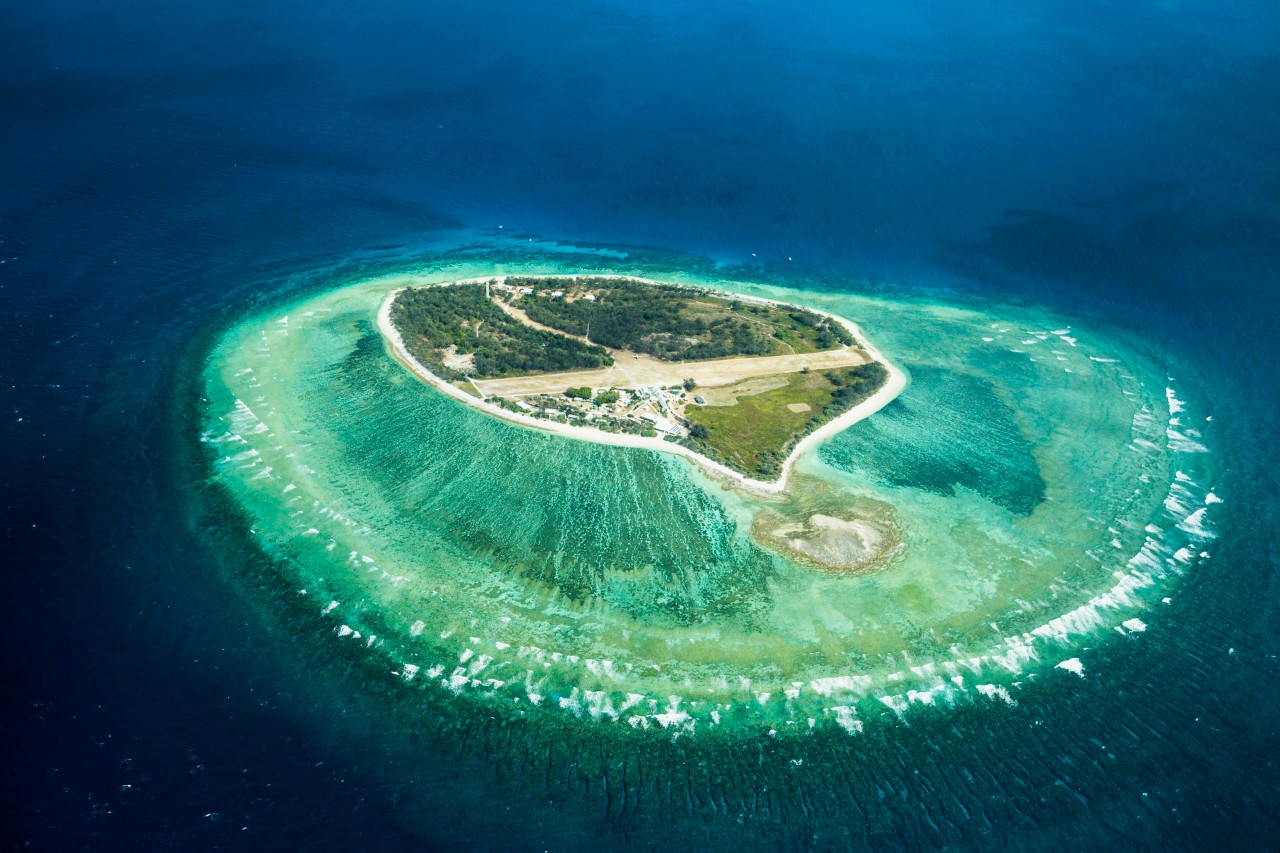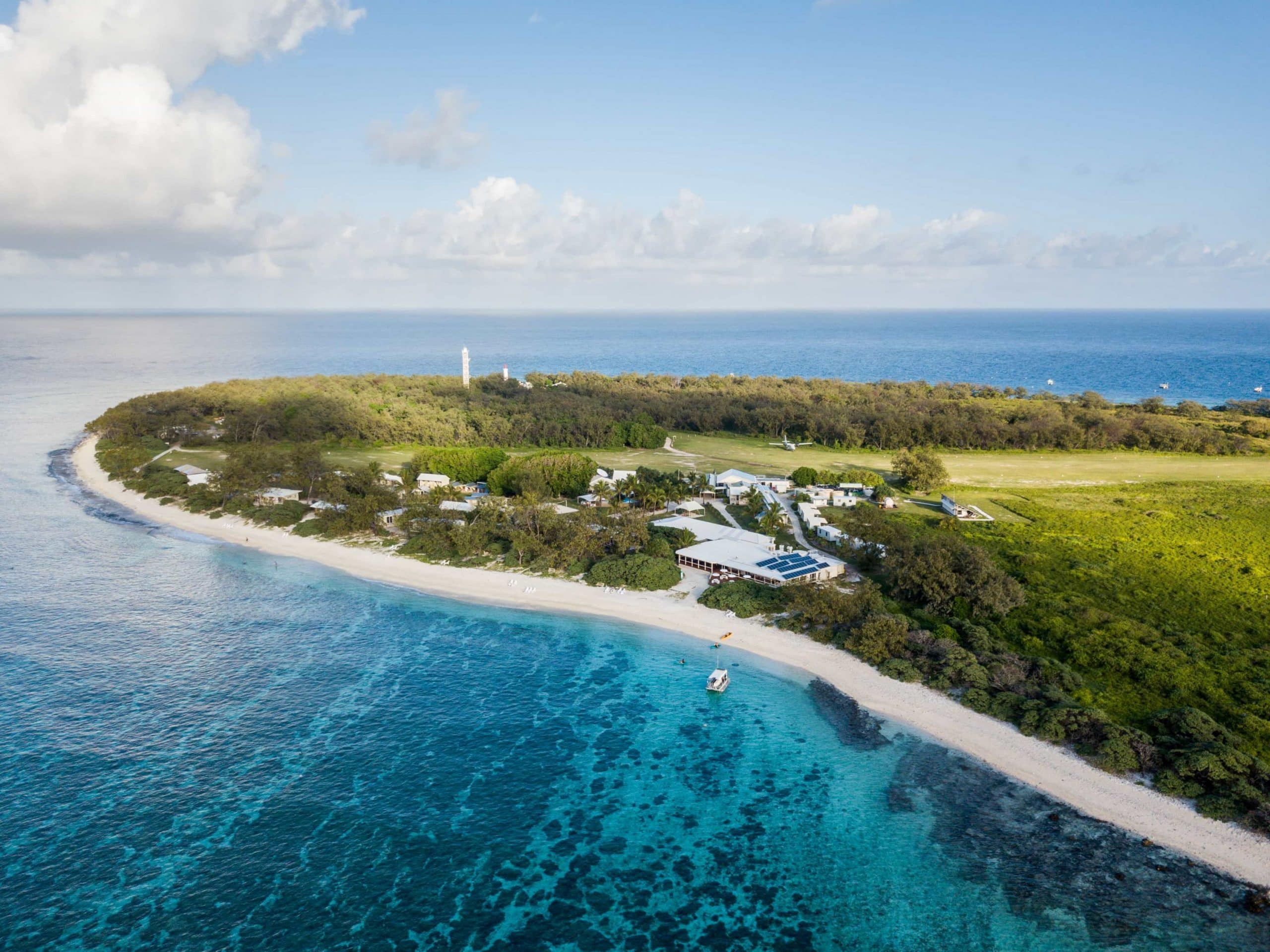No Products in the Cart

Thousands of visitors from all over the world flock to Australia's Great Barrier Reef each year to explore the colorful world beneath the sea in queensland beach.
Home to some of the planet's most breathtaking underwater views in the Great Barrier Reef with an underwater kingdom like nowhere else on earth, be sure to put Queensland, Australia on your bucket list.

On the southern tip of the Great Barrier Reef, Lady Elliot Island is known as the “Home of the Manta Ray” because a snorkeling encounter with these gentle giants is almost always a certainty.
With underwater gardens that begin as soon as you step off the beach, a sheltered lagoon, and coral outcrops perfect for the tiniest explorers, Lady Elliot Island is one of the best family-friendly snorkeling sites on the Queensland coast. You can stay on this beautiful island at the Lady Elliot Island Eco Resort.
Prefer to navigate deeper waters to capture IG-worthy photos? Visit the coral ledges on the island's western side to swim alongside dolphins, mantas, hawksbill, and loggerhead turtles. For even more turtle-spotting action, visit during hatching season, from November through to April, and watch one of nature's most incredible shows play out before your eyes.

Source: Lady Elliot Island
With crystal-clear waters protected by the Great Barrier Reef, many of the Whitsundays' 74 islands make for a great place to snorkel.
The closest of the Whitsundays to the outer reef, Hayman Island has enough snorkeling options to keep you in the water all day long. For the best beach snorkeling, head to Blue Pearl Bay on the island's north-western coast. Popular with tourists and locals for snorkeling, diving, and swimming, Blue Pearl Bay is known for its coral and fish life including a resident Maori Wrasse. Diving day tours and overnight boats visit Blue Pearl Bay where visitors can swim directly off the vessel.
Diving depth is from 3 to 60 feet. Diving visibility is typically from 3 to 50 feet.

Green Island is home to the only rainforest on the Great Barrier Reef. Set on a 6000-year-old coral cay, not far from Cairns, Green Island is abundant with land animals and marine life like nowhere else on the planet. White sand beaches, sapphire waters, and a magnificent array of underwater gardens make it easy to understand why green is such a popular destination.
For a very small island, Green Island has played a large role in the history of Tropical North Queensland and the Great Barrier Reef regionAn Interpretive Boardwalk, designed in 6 languages, showcases the island's European and Aboriginal histories and outstanding natural values.
Green Island is very close to the mainland, lying only 16 miles from Cairns. Classified as an onshore patch reef, the island sits on the north-western edge of the reef flat. Waves push large piles of sand, coral rubble, broken shells, and other reef debris into a pile on the leeward side to form sand or coral cay islands on top of the existing reef.

As much as 60 percent of all the fish and 72 percent of the coral species that live in the Great Barrier Reef can be found at Heron Island, making this a great place to start your reef-snorkeling experience. The waters around the wreck of HMAS Protector, which was purposely sunk as a breakwater, are teeming with life. And as an added bonus, migrating Humpback whales can be seen from June to September.

The Ribbon Reefs, a long and winding stretch of 10 individual reefs, located one and a half hours from Port Douglas in the Cairns Great Barrier Reef region, are beloved by snorkelers and divers who come for the spectacular drop-off over the Coral Sea trench and the incredible 30m water visibility.
Kids will love to snorkel in the island’s shallow lagoons rich with coral, unicornfish, and parrotfish. Head to the famous Cod Hole site for a selfie with the friendly giant potato cod. Queensland beach is also the only place in the world where humans can interact with dwarf minke whales which appear in June and July.

If you’re seeking an outer reef experience you can enjoy with your kids, Agincourt Reef is one of the best snorkeling sites in Queensland beach. For maximum kid appeal, choose a family-friendly tour that includes an underwater observatory for those who don’t want to get wet and snorkeling platforms for those that do. Burgeoning marine biologists can even take a guided snorkel tour and learn all about the reef’s delicate ecosystem.
Just a 45-minute cruise from Cairns lies petite Fitzroy Island with its mix of pristine rainforest, open woodland, and sheltered beaches fringed by coral reefs. Almost entirely a national park, Fitzroy is one of the most untouched islands in the Great Barrier Reef.
While away a lazy afternoon exploring the calmer waters of the island’s southwest coast on Welcome Bay and Nudey Beach; enjoy the Cairns Turtle Rehabilitation Center and Reef Restoration Coral Project to witness conservationists in action, or take a leisurely walk to the lighthouse in between snorkel sessions.

Nature lovers from around the globe flock to Lady Musgrave Island, a 1,200-hectare lagoon encircling an uninhabited coral cay, just a 90-minute boat ride from Bundaberg or the town of 1770 in Gladstone.
Protected from the current and with fantastic visibility all year round, the lagoon is home to 350 varieties of corals and 1,300 species of tropical fish, making it a bit of an outstanding snorkeling destination.
Lucky explorers will likely encounter a few local turtles who wait patiently on the shore for little cleaner fish to pick the algae and parasites off their shells– mother nature’s day spa. Make a mini-vaca of your visit to the island by spending the night at a wild campsite or staying in luxury on a floating pontoon.
A mesmerizing display of shifting, swirling colors in the sky, the Aurora Australis has amazed inhabitants of the Great Southern Land from its First Peoples to Captain James Cook, who documented the spectacle during his first voyage to Australia in 1770.
Like its Northern Hemisphere counterpart, the aurora borealis, the southern lights occur when electrically charged solar particles collide with atmospheric gasses. The resulting energy translates into nature’s most amazing light show.

If your suitcase is stuffed to the limits, you can always make room with a great underwater camera when you protect your own phone with a waterproof floating phone case.
Take breathtaking photos and videos like a pro in the depths of the Great Barrier Roof like a pro without worrying about losing your phone on the memories on it. Bring your essentials with you wherever you go without worrying about water damage with the CaliCase Dry Bag, a must-have item for your trip down under.